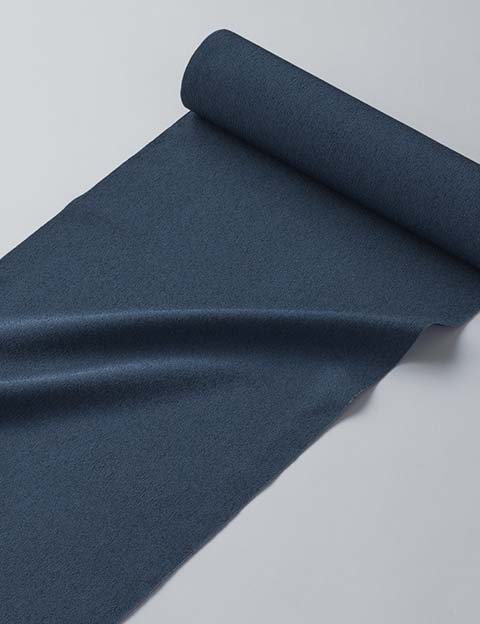TAMA Ori (Textiles)

Two silk cloths known as Takiyama pongee and Yokoyama pongee were being made toward the end of the 12th century in present-day Hachioji on the western edge of Tokyo.
Toward the end of the Muromachi period (1392-1573), however, a man named Hojo moved into the area and encouraged the local people to develop the craft. Soon after, a production center was soon established. With the surge of enthusiasm for anything new after the Meiji Restoration in 1868, technology progressed rapidly, and Tama fabrics are founded on developments made at that time.
Tama fabrics is a generic name for a number of different weaves. Apart from a complex tapestry weave called kawari tsuzure, they include yarn dyed and pre-twisted plain woven cloths, as well as twills and more complex satin float weaves. Many of the fabrics, which are light weight and do not easily crease, are for kimono and other traditional garments. Although the cloths are tastefully elegant and practical with a traditional demeanor, this is changing. Recently, a number of fine new cloths have appeared that are both modern and fashionable, yet rely on what can only be achieved through handmade cloth.
Feature
Tama ori consists of the following six techniques: omeshi-ori, tsumugi-ori, Fuutsu-ori, kawaritsuzure and mojiri-ori. While Tama ori was traditionally used to produce modest daily articles, recently by introducing fresh, refined designs, new textures and modern techniques, the style continues to produce stunning fabrics in line with its hand-made traditions.
How to make
Omeshi-ori uses previously dyed or refined silk threads in a simple, twill, satin or variable weave. After initial twisting, bracken powder or rice-glue is rubbed into the weft threads. They are right-twisted and then left-twisted on a Haccho nenshiki traditional silk thread twisting machine. After weaving the resulting threads, the fabric is massaged in hot water to remove any wrinkles and stretched horizontally before being hung to finish.

